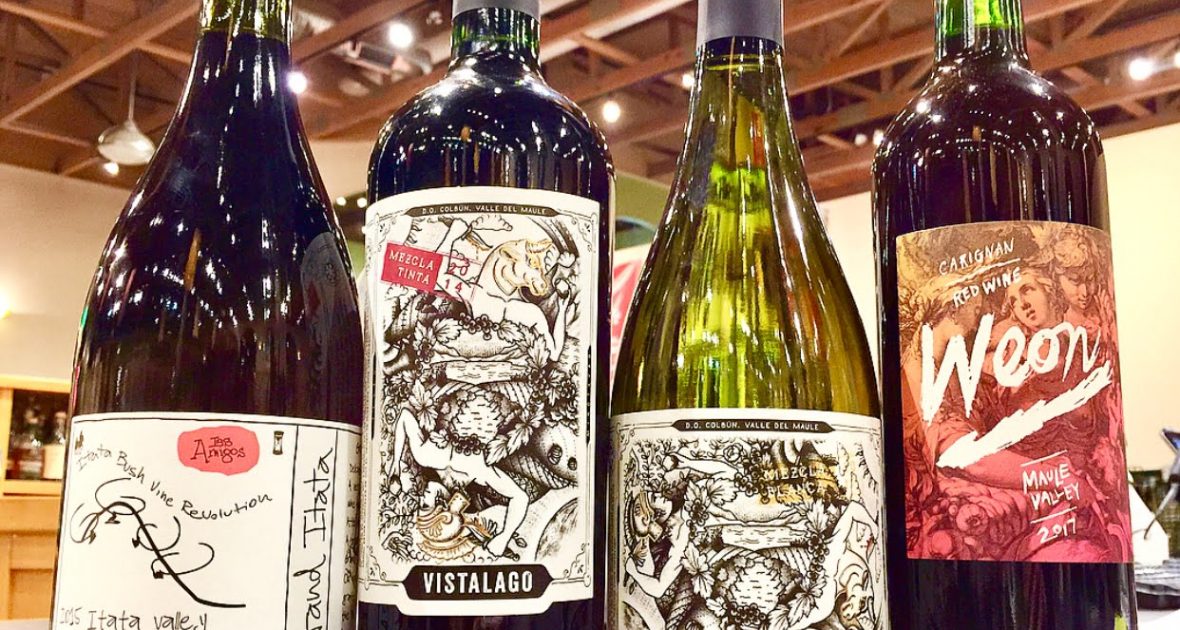Go ahead and Google “New Chilean Wine.”
There’s been a quiet movement of sorts happening in Chile, and wine lovers are beginning to take notice. Somebody in Chile finally figured out that the world has become overly saturated with cheap, simple table wine from every pocket of the globe and that maybe a new vision is needed.
There are a few large producers from Chile that are well-known—Concha y Toro, who makes Casillero del Diablo, is by far the largest and most recognizable. Or maybe you’ve seen these bottles before without realizing that they came from Chile! These sorts of brands transcend Place altogether and proclaim, “I yam what I yam, and that’s all what I yam.”
But.

There’s a new awareness flowing out of Chile, and it is one of Place and Identity—not of corporate brand. This is indeed the New Chilean Wine movement (as well as the name of an actual portfolio of wine), and it’s all about bringing life and authenticity into this half-familiar/half-exotic wine culture. The Chilean wines that have landed in Minneapolis recently are not “cheap,” but they have a ton of value. When you drink a wine like Weon Carignan, you taste the ripe, easy-drinking, fruit-driven character that you’ve come to expect out of South American wine… but you also taste the difference in quality that $5.99 extra gives you. When you stick your nose in a wine like Rogue Vine’s Grand Itata from the Itata Valley (the second most-fun Chilean wine region to say, right after Bio Bio), you realize that there’s far more than meets eye and that, unlike yesterday’s Chilean wine selections, you can spend a little time and brainpower with this bottle. So in terms of getting good value for your money, these wines go astronomically beyond what $10 will usually get you from Chile.
This new wave of wines brings with it a vibrant edginess in packaging, too: bright colors, graffiti art, and hand-drawn labels. This modern approach is a parallel to what intrigues us about places like Chile, Peru, and Argentina: there’s adventure to be sought after; a pure, wild expression of nature to explore; and an intriguing national (and viticultural) history to learn about.
There’s a new little bookstore in St. Paul just down the street from our Meat Shop with a sign on the front door that says, “Books for Curious People.” And if you’re a curious enough imbiber, this new little collection of bottles hailing from a country 2700 miles long and 100 miles wide (about the same as the bookstore) will invite you down a newly-broken trail of beguiling, fascinating, and ultra-rewarding wine experiences.
Vistalago Mezcla Blanca | Maule Valley — $19.99
Fresh, aromatic and quietly exuberant. This unique white blend has complexity, but draws you in first and foremost with is lively floral perfume and leaves your palate with a gentle, lingering green apple note and a mineral freshness.
Vistalago Mezcla Tinto | Maule Valley — $19.99
Bordeaux and Rhone grape varieties have found a comfortable home in Chile, and the Mezcla Tinto exhibits this perfectly. At a balanced 13.7% alcohol, this medium-weight red blend is ripe without being too weighty, and fresh without turning stemmy and green.
Weon Carignan | Maule Valley — $15.99
The Carginan grapes in this Weon bottle were hand harvested from a 10 hectare vineyard tucked inside the Maule Valley. The body is medium-light, evoking hints of mulberry, plum and violets. Try it lightly chilled for an extra burst of vibrant juicy fruit on your palate.
Rogue Vine Grand Itata Tinto | Itata Valley — $19.99
5500 bottles were made of this wine. That’s not even 500 cases. And in wine production terms… that’s miniscule. All the more reason to get your hands on a couple bottles of this ultra-unique wine, made from old bush vine Carignan in Chile’s southernmost wine region, less than 10 miles from the Pacific Ocean. Bright red fruits combine with rose petals and forest floor to create a complex nose with a bit of intriguing funk. The palate is defined by its tannin and acid structure that keeps the wine lifted, accentuating the fruit and leading to a racy finish.
